
Memorizing and understanding the different types of wine takes time. While there are only five major types of wine, there are so many styles to each one. In fact, bottles of red wine often taste different from one another. It’s a lot to take in. Still, wine is just as interesting as it is tasty. It’s definitely worth learning about them if you’re a wine enthusiast!
What is wine?
On trips to the grocery store, you’ll easily notice the bottles of wine in the same aisle as other alcoholic drinks. Wine comes from fermented grapes. However, there are wineries that produce wine from other kinds of fruit. This includes apples, plums, cherries, and cranberries.
It’s worth mentioning that wine grapes differ from table grapes. Table grapes are those that we buy in packages from the market. Meanwhile, wine grapes are those used for wine. They are smaller and sweeter, with thicker skin and more seeds. There are also different types of wine grapes. In fact, most wines are named after the names of the grapes they were produced from.
While the levels vary, all wines contain alcohol. Some have lower levels of alcohol, while some can have up to 21% alcohol.
If you’re interested in wines, then you’ve come to the right place. This list will tell you all you need to know about the different types of wine!
How do we describe wine?
When sommeliers talk about wine, they often talk about how they prefer wines with a light body. Some talk about high tannin wines, and some like to sip on wines that taste “fat.” There are a lot of fancy terms you can use to describe wine. So many, in fact, that it can often get a little confusing. To make things a little easier, here’s a brief glossary that covers the basics:
Acidity
The acidity of a bottle of wine determines its freshness. The higher a wine’s acidity is, the more refreshing the taste will be. Wines with higher acidity are usually “crisp.” In contrast, a wine with lower acidity will often lose its mouth-watering feel and be “fat.”
This factor is especially important in judging white wines, which people often drink for their crispness.
Aroma
You’ll notice that people usually smell their wine before taking a sip. A wine’s aroma can say a lot about the wine’s flavor profile. Older wines usually have stronger scents. Some wines with added fruits, herbs, or flowers will also have distinct scents. An example of this is “earthy wines,” which refer to wines with a strong unpleasant smell.
Other terms for aroma include “bouquet” or “nose.”

Backbone
Sommeliers will often discuss how wine has a “backbone” or not. Wines with a backbone refer to those that are full-bodied and balanced. In contrast, wines without a backbone refer to poorly balanced wines without complementing flavors.
Balance
Wine enthusiasts use this as a positive term. When they say a wine is balanced, then this means that the fruit, alcohol, and acid profiles of the wine are complimentary. Not a single factor overpowers the other. All of them blend harmoniously together.
Body
A wine’s body refers to the weight of the wine in your mouth. This refers to the thickness and feel of the wine. There are usually three ways to describe this: full-bodied, medium-bodied, and light-bodied.
Full-bodied wines refer to wines that feel thick and heavy in your mouth. Light-bodied wines are light and will feel like water in your mouth. Medium-bodied wines fall in between the two.
Developed
Developed wines refer to mature, aged wines. Often, people will order wine based on its year. You’ll also notice how aged wines are much more expensive. This is because aging wine can take up to years, usually decades.
Aging wine will change its entire profile, including its aroma, body, and even color. Usually, developed wine tastes better. However, it is up to preference. There are plenty of fresh wines that might suit your tastes as well.
Finish
This refers to a wine’s aftertaste. This isn’t often a factor we consider when consuming other kinds of food, but people often see this as a big deal for wine. When judging wines, sommeliers often take small sips with pauses in between. This is to savor the taste of the wine and to judge its finish as well.
Some ways to describe the aftertaste of wines are smooth, smoky, and spicy.
Legs
After tipping back a wine glass to take a sip, you’ll notice droplets of wine stick to the sides. These are the “legs” of the wine. Wine “legs” help drinkers determine the alcohol and sugar content of their glass.
This is because these droplets are actually a result of the Gibbs-Marangoni Effect. This effect occurs from the evaporation of alcohol, which NASA did a study on in outer space. To put it simply, the more legs you see on your wine glass, the higher the alcohol content of the wine.
Some also call wine legs “tears of wine” or “Church Windows.”

Old World VS New World
Given wine making’s long history, there are so many ways to make wine. However, traditional methods persist in historical wine regions. These historical wine regions include France, Italy, and Portugal. Wines produced in these regions are called “Old World” wines.
On the other hand, wines made outside of these regions are called “New World” wines. This includes the U.S., New Zealand, and other wine-making countries in South America.
Tannin
What are tannins? Tannins refer to the bitter-tasting substances found in wood, plants, and other fruit. In this case, tannins in red wine come from grapes and, sometimes, the oak barrels the wine is kept and aged in.
Tannins affect the dryness, bitterness, and astringency of wine. For instance, red wine with high tannin is more bitter. Plus, they make your mouth feel dry after a few sips. Sommeliers call high tannin wine “tannic.” If this is still difficult to understand, think of the last time you drank a cup of tea or coffee. Tannin in the tea or coffee causes a dry feeling in your mouth after you finish your cup. This is the same for wine.
Sweetness
Another way to judge wines is through their sweetness. Just like any other food or drink, wines can also be sweet. There are, of course, some that aren’t sweet at all. Wine sommeliers call this dry. In between sweet and dry is medium-dry or off-dry. When a wine contains only a hint of sweetness, that’s when you call it off-dry.
Knowing about these terms will help you understand the different types of wine better. Plus, it’ll help you talk fancy just like wine sommeliers do. With these terms in mind, you’re now ready to learn more about the different types of wine!
Red Wine
When talking about wine, most people often think of red wine in a large round wine glass. Thus, it doesn’t come as a surprise that red wine is one of the most popular types of wine. The deep red color of red wine comes from soaking the juice with either black or red grapes. The skin of the grapes bleeds into the juice, resulting in a rich, red shade.
There are different types of red wine. These refer to the styles based on the red wine’s body. There are three: light-bodied, medium-bodied, and full-bodied red wine.
Red wine is also culturally significant. In Greek mythology, followers of the Greek god Dionysus used wine in their festivals. In Ancient Egypt, they believed red wine to be related to blood. Red wine is also important in religious practices. In Christianity, priests drink red wine during mass.
Cabernet Sauvignon
Pronounced “Kab-er-nay Saw-vin-yawn”
Cabernet Sauvignon is one of the most popular red wines today. This red wine is full-bodied with high tannin. It also has high levels of alcohol. Thus, you’ll want to watch yourself while you take sips of this over dinner.
Popular food pairings with Cabernet Sauvignon include red meat like lamb or beef. For something a little lighter, you can also go for some hard cheeses like Pecorino.
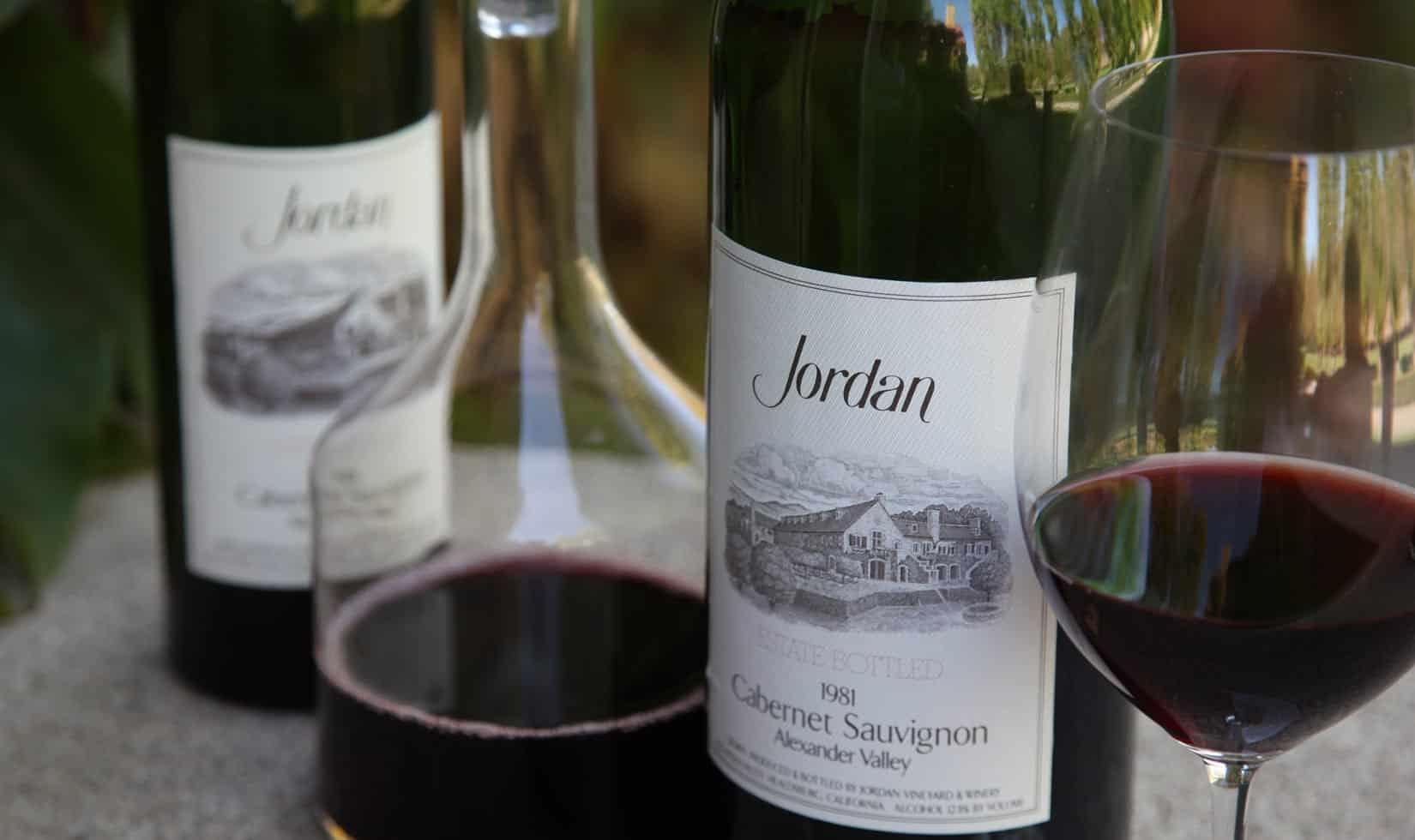
Merlot
Pronounced “Mer-low”
Second to the Cabernet Sauvignon is Merlot. Merlot is also full-bodied with high levels of alcohol and tannin. However, there are varieties of medium-bodied Merlot. Most Merlots are dry, so if you have a sweet tooth, this might not be the wine for you.
However, if you do like dry wines, then consider drinking Merlot paired with beef. Any roasted meat will taste good with Merlot.
Another fact about this red wine is that “Merlot” is actually French for “the little bird.”
Cabernet Franc
Pronounced “Kab-er-nay Fronk”
Did you know that some wines have “parents”? Cabernet Franc is the parent of Cabernet Sauvignon and Merlot. What this means is that winemakers often blend Cabernet Franc with Cabernet Sauvignon and Merlot to produce complex wine blends.
While it is often used for wine blends, Cabernet Franc is also a popular wine drink on its own. It is a dry, medium-bodied red wine with varying levels of tannins and acidity. Highly acidic Cabernet Franc tastes best with tomato-based dishes.
Syrah
Pronounced “Sear-ah”
Another full-bodied red wine is the Syrah. Syrah wine is known for its fruity flavors like blueberry and plum. It has medium-weight tannins, so it is a lot more forgiving in the mouth. However, Syrah has what people call a “meaty” quality. This makes it taste like cured meat.
Some common food pairings for Syrah include smoked meats like lamb and beef. White cheddar also tastes good with a glass of Syrah. France and Australia are the prime producers of this type of wine.
Zinfandel
Pronounced “Zin-fan-dell”
Zinfandel is another type of red wine. It has varieties that can be medium-bodied to full-bodied. Its medium-bodied style comes from Croatia, where it is called “Primitivo.” Zinfandel is off-dry. While it is less acidic than other types of wine, it still has some distinct hints of fruit. Some of these flavors include raspberry, plum, and blackberry.
Zinfandel is a popular drink in Italian, American, Chinese, Thai, and Indian cuisine. People often pair this drink with cured meats and cheddar.
Pinot Noir
Pronounced “Pee-no Nwar”
The last of the types of red wine is the Pinot Noir. This is a light-bodied red wine. It also has a low-tannin finish, leaving your mouth feeling smoother than most red wines. However, it is dry, so it isn’t sweet in the slightest. Some ingredients of Pinot Noir wines include cherries, roses, beets, and rhubarb.
For food pairings, try drinking Pinot Noir with a meal of cured meat and soft cheeses. Chicken, pork, and veal meals also work well with Pinot Noir.
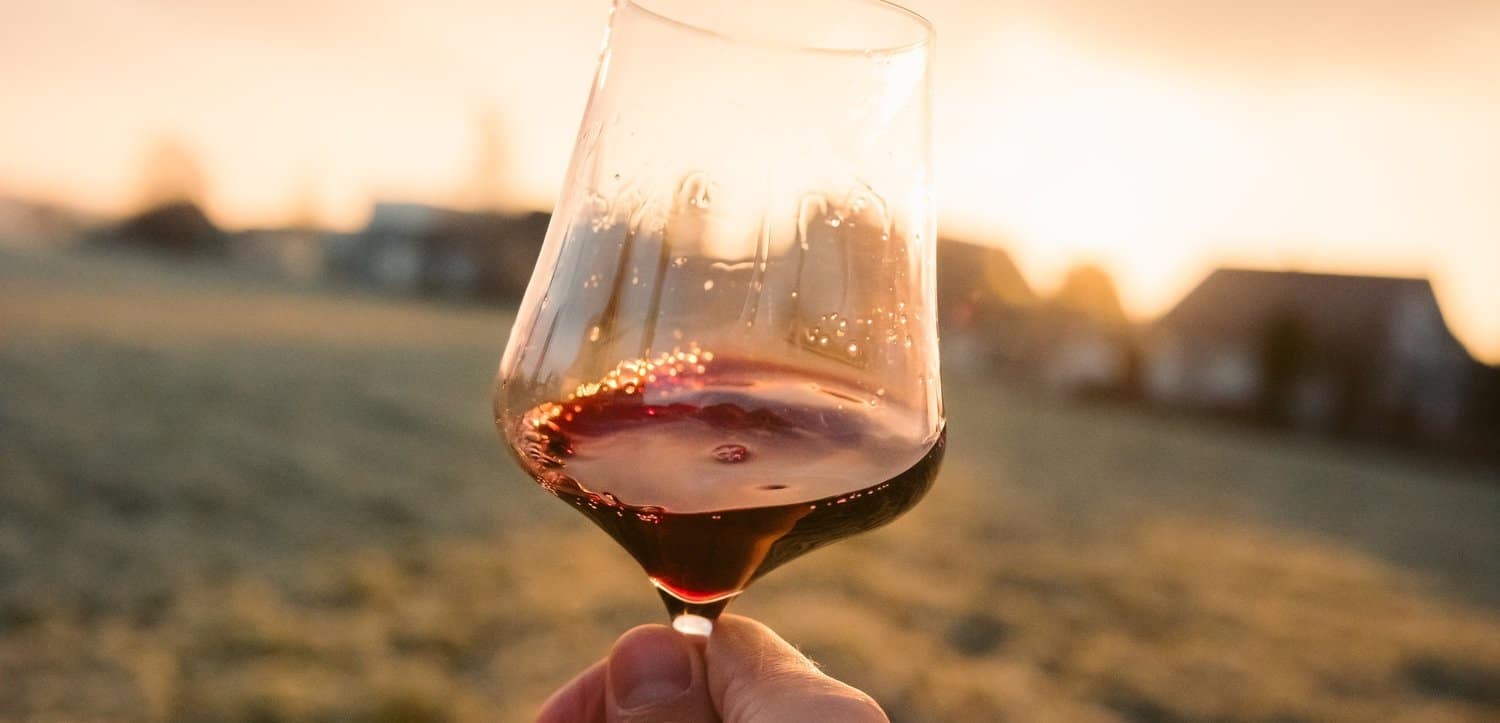
White Wine
Out of the types of wine, you’ll notice most people describe white wines as “crisp” and “fresh.” In contrast to red wine, white wine is a light, clear liquid. You might think that red wine and white wine come from different grapes, but what really sets these two apart is the process.
To make white wine, winemakers have to remove the skins and seeds of the wine grapes. That way, the grapes don’t bleed color into the juice when it is pressed. After pressing the grapes, winemakers then store and leave the juice for fermentation.
Like red wine, there are different types of white wine. There are light-bodied, medium-bodied, and full-bodied white wines.
Chardonnay
Pronounced “Shar-dun-nay”
This is one of the most popular wines in this category. Chardonnay is a dry, medium-bodied white wine. It has no tannins and medium acidity. Its appearance is a clear pale gold color. Flavor-wise, Chardonnay tastes zesty like lemon. Like all white wines, it leaves a fresh finish in your mouth. If Chardonnay is aged in an oak barrel, the resulting wine will be spicy, with notes of bourbon.
People often drink Chardonnay with seafood. Lobster, crab, and halibut are popular food pairings for this drink. However, pork tenderloin is also a fit match for this zesty wine.
Moscato
Pronounced “Moe-ska-toe”
Moscato, which is Italian for “Muscat Blanc,” is another famous white wine. Moscato has a lot of styles. Its aroma is very sweet and fruity. Don’t let its scent fool you, though. Moscato is actually dry. However, there are versions of Moscato that are sweet, such as Moscato Dessert Wines.
Greece, Spain, and Austria are prominent wine-making regions for Moscato.
Sauvignon Blanc
Pronounced “Saw-vin-yawn Blonk”
The Sauvignon Blanc comes from a white grape originating from France. This white wine tastes tart, with firm notes of citrus and herbs like grass and mint. Variations of the Sauvignon Blanc range from light-bodied to medium-bodied.
The high acidity of this white wine makes it the perfect pair for seafood. Mexican, Vietnamese, and French cuisine also favor this white wine. For something a bit lighter, you can try Sauvignon Blanc with goat cheese.
Pinot Gris
Pronounced “Pee-no Gree”
Out of the different types of wine, Pinot Gris is a lot easier to drink. It is a dry, light-bodied white wine with soft notes of citrus and fruit. This makes it easy to drink, so new wine enthusiasts often start with the Pinot Gris.
Its wine grape is abundant in Italy, France, and Germany. Another fact about Pinot Gris is that its name is interchangeable with “Pinot Grigio.” “Pinot Gris” is its French name. Meanwhile, “Pinot Grigio” is its Italian name.
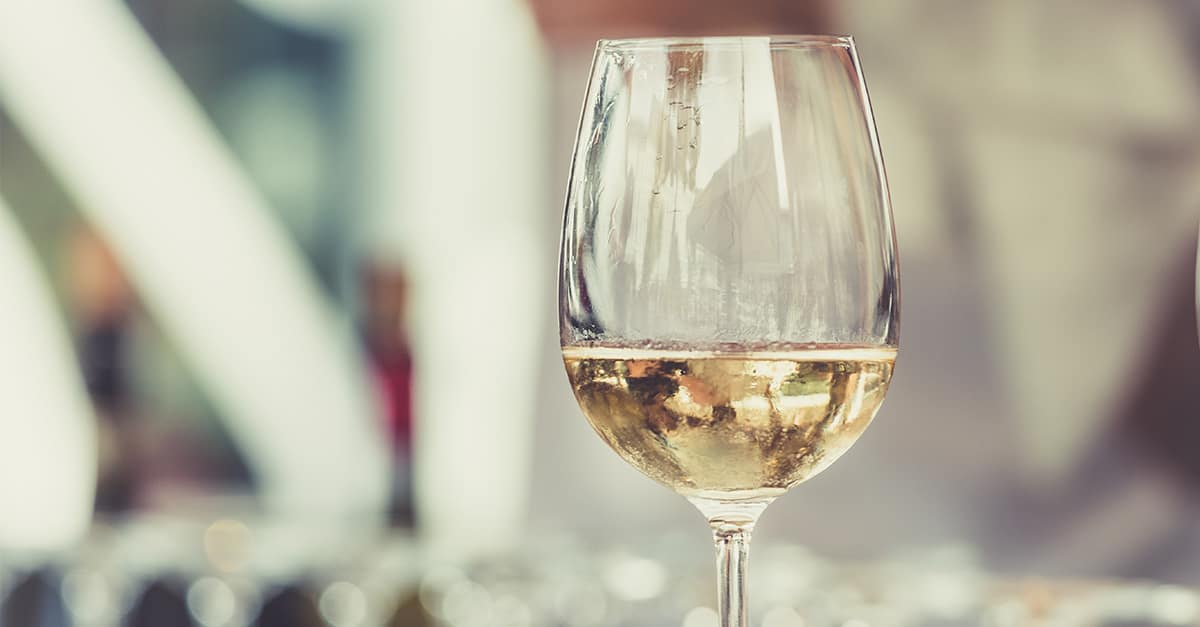
Pinot Blanc
Pronounced “Pee-no Blonk”
The white wine counterpart of Pinot Noir is Pinot Blanc. Pinot Blanc is made from white grapes from Germany and Italy. This white wine is dry, light-bodied, and has no tannins. It has a medium acidity, which makes it easier to swallow down than its red wine counterpart. Some flavors of Pinot Blanc include pear, peach, and raw almond.
These zesty notes make it a fitting match for soft cheeses. You can also pair this with salads or certain seafood.
Riesling
Pronounced “Reese-ling”
Out of the types of wine, Riesling is one of the most aromatic. This white wine’s scent is powerful and floral. Like most wines, Riesling comes in many styles. Most Rieslings are very acidic. They differ in sweetness. Some are very sweet, while some can be off-dry. However, if you are looking for a fruity drink, then the Riesling is the one for you.
Like other types of white wine, Riesling is a great pair with cured meat. Moroccan and German cuisine also favor Riesling.
Sparkling Wine
Sparkling wine differs from other types of wine because of an extra step in its process. To make sparkling wine, the wine must go through secondary fermentation. This causes sparkling wine to have bubbles. When you drink sparkling wine, you’ll notice that it gives a fizzy feeling in your mouth. This is because it has higher levels of carbon dioxide in it.
Since sparkling wine is just carbonated wine, it has a lot of variations. Red, white, or Rosé wine can all be sparkling wine. The most popular sparkling wine is champagne. Champagne refers to sparkling wine specifically made in France’s “Champagne wine region.” This means that wines that aren’t produced in this region cannot be called champagne.
Rosé Wine
Another type of wine is Rosé wine. To make Rosé wine, winemakers remove the skin of the black grapes at the beginning of the process. That way, the grapes’ skin doesn’t stain the wine a deep red. Rosé wine is pale orange or pink.
Rosé wine also comes in different styles. You’ll find sweet ones and dry ones. There are also sparkling Rosé wines, so you will find one that you like. Plus, because Rosé wine varies, you can experiment with which ones to pair with your Friday dinner!
Some popular examples of Rosé include White Zinfandel, which is popular in California. This fruity wine is sweet with strawberry, raspberry, and melon flavors. Syrah Rosé is another example from Spain. It has cherry and peach flavors.
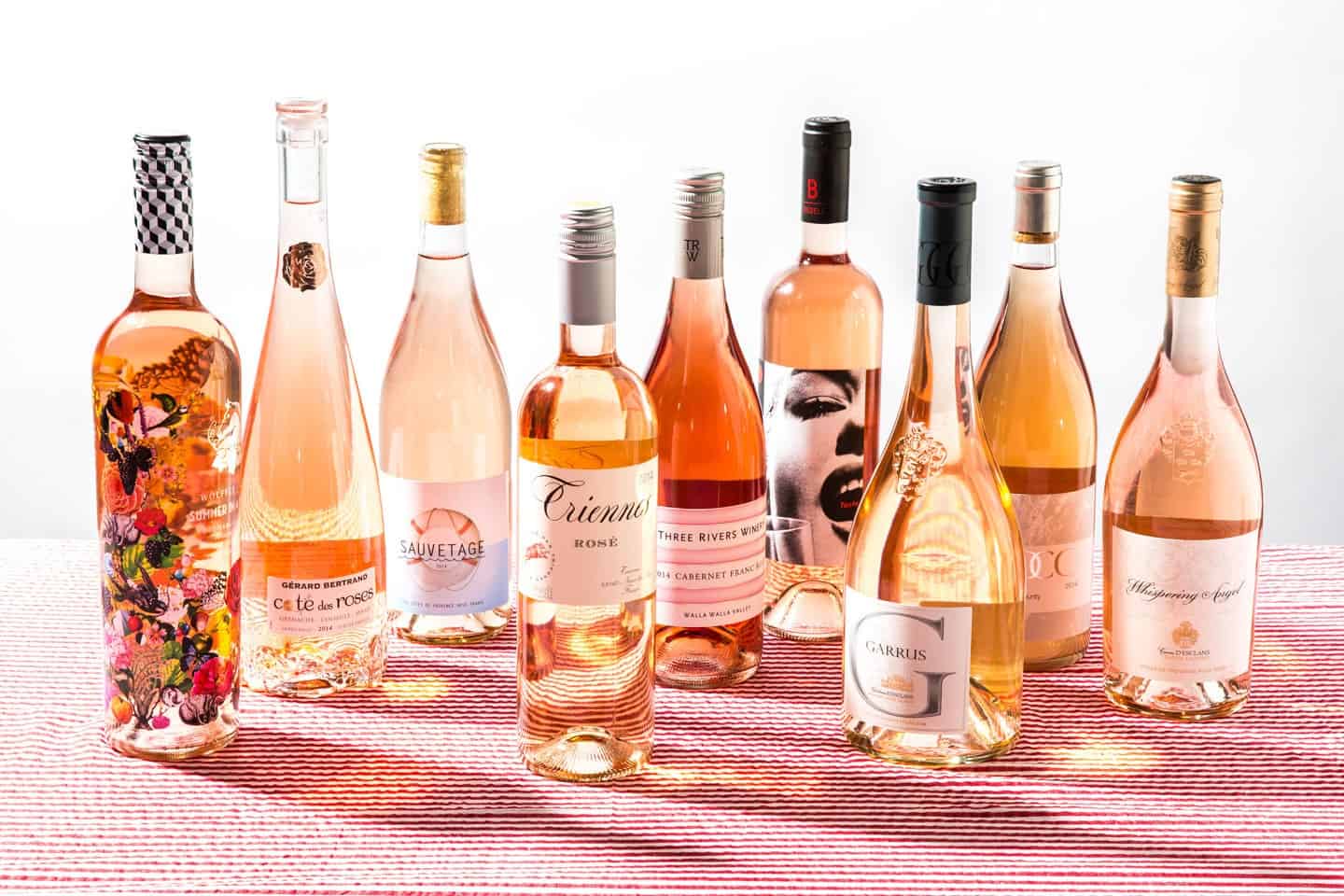
Dessert Wine
Dessert wines typically refer to any sweet wine you can serve with dessert. This includes all types of wine. As the name suggests, dessert wines are drunk during dessert. This is in contrast to some wines that are drunk before or after meals. A common food pairing for dessert wines is a platter of peaches or biscuits.
The alcohol content of most dessert wines is over 14%. Typically, dessert wines are served chilled or cold. However, you can also enjoy red dessert wines at room temperature.
Regional Wines
Another way to group the types of wine is through locations. Regional wines depend on where the wine is produced. For winemaking, this is very important because different places have different ways of making wine.
Two of the major regional types of wine are the Old World and New World wines. Under Old World wines are Bordeaux Wine and Burgundy Wine.
Bordeaux Wine
France’s City of Bordeaux is famous for its wineries. The wines that they produce are all Bordeaux wines. Some examples of Bordeaux Wine are Merlot and Cabernet Sauvignon.
Burgundy Wine
In East-Central France, Burgundy is also famous for its wine activities. People call all wines from Burgundy as Burgundy Wine. There are some specific types of wine that are more popular in Burgundy. For instance, when people mention a “Red Burgundy,” they are likely referring to a Pinot Noir. If they mention a “White Burgundy,” they are probably talking about a Chardonnay.
Types of Wine Glasses
Each type of wine is best enjoyed with its appropriate wine glass. That’s right. There aren’t just types of wine out there. There are also types of wine glasses too! You don’t have to worry, though, most wine glasses are named after their paired type of wine.
There are, however, general categories. This includes red wine glasses, white wine glasses, dessert wine glasses, flutes, and stemless wine glasses.
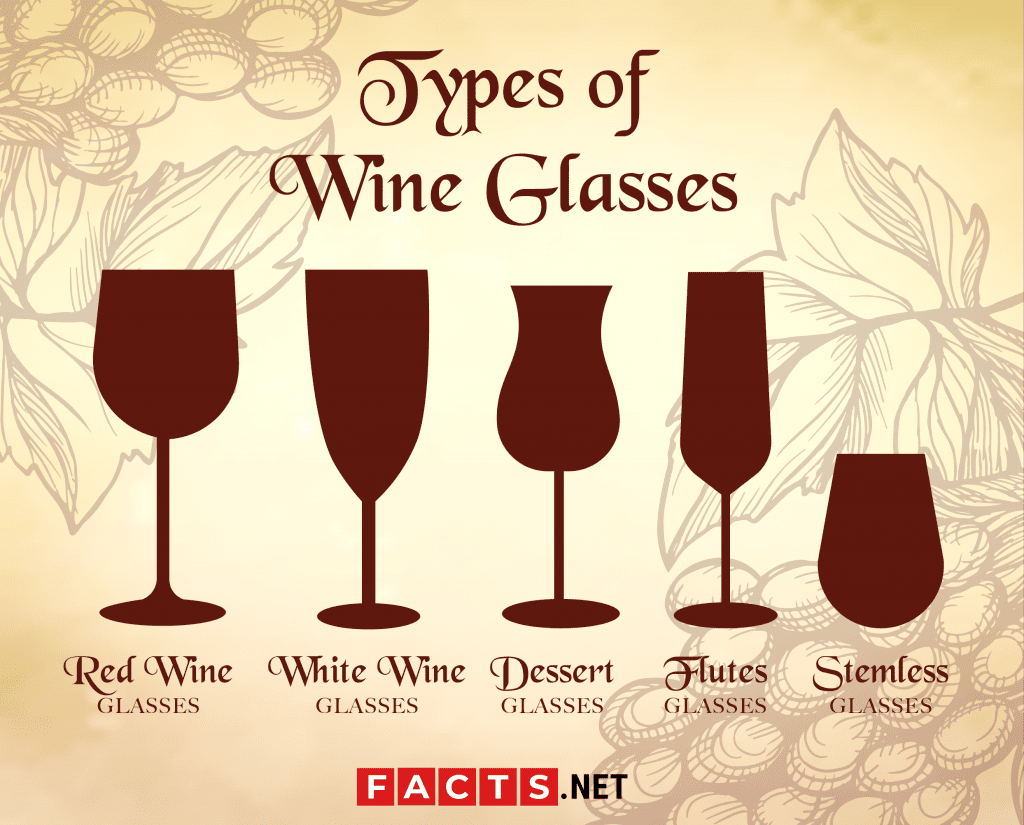
Red Wine Glasses
For red wine glasses, you’ll notice that they have a full, round bowl. It also has a large opening that allows you to smell the wine better. Furthermore, the full bowl helps the wine aerate. This helps soften the complex flavors.
White Wine Glasses
Compared to red wine glasses, white wine glasses are less round. Instead, they are U-shaped with a smaller bowl. This helps preserve the smell, as it lessens oxidation. Since people often prefer chilled white wine, the shape also helps maintain the wine’s temperature.
Dessert Wine Glasses
This type of wine glass is much smaller than the previous two. This is because dessert wines often have high alcohol content. Dessert wine glasses are usually tall with a narrow mouth. This shape makes it easier to tip back the dessert wine into the back of your mouth.
Flutes
For the best experience, drink sparkling wine in a flute glass. Flute wine glasses have a long, narrow bowl. They have a bead at the base which causes the bubbles of sparkling wine to rise. This shape helps keep the sparkling wine fizz. That way, you can enjoy your drink for much longer!
Stemless
This type of wine glass, on the other hand, is a modern approach to wine glasses. It offers a sleek look since it doesn’t have a stem. Since you directly hold the bowl, the wine loses its cool temperature faster. However, this is a popular all-purpose wine glass that you can use for any type of wine you prefer.
Was this page helpful?
Our commitment to delivering trustworthy and engaging content is at the heart of what we do. Each fact on our site is contributed by real users like you, bringing a wealth of diverse insights and information. To ensure the highest standards of accuracy and reliability, our dedicated editors meticulously review each submission. This process guarantees that the facts we share are not only fascinating but also credible. Trust in our commitment to quality and authenticity as you explore and learn with us.


